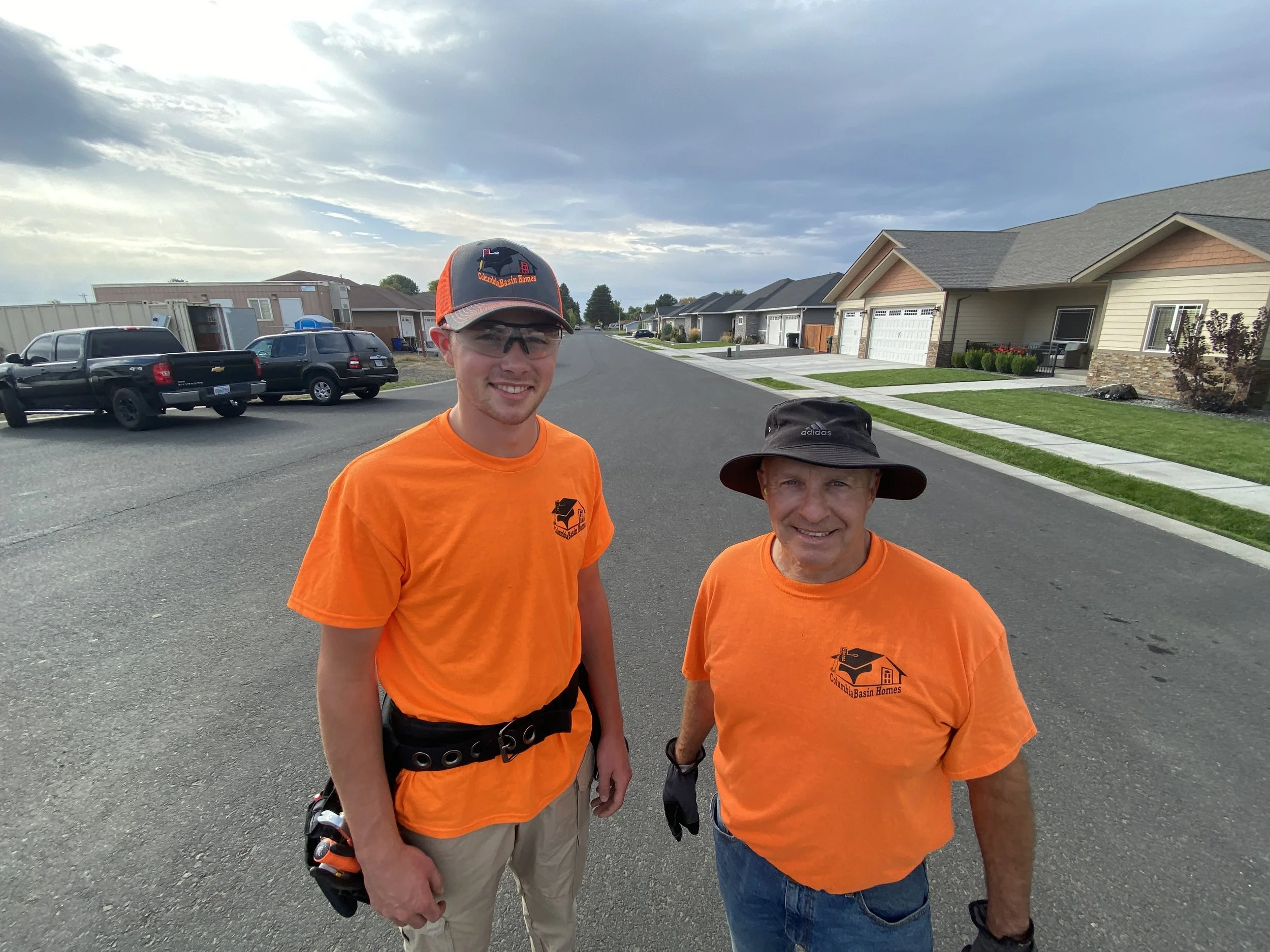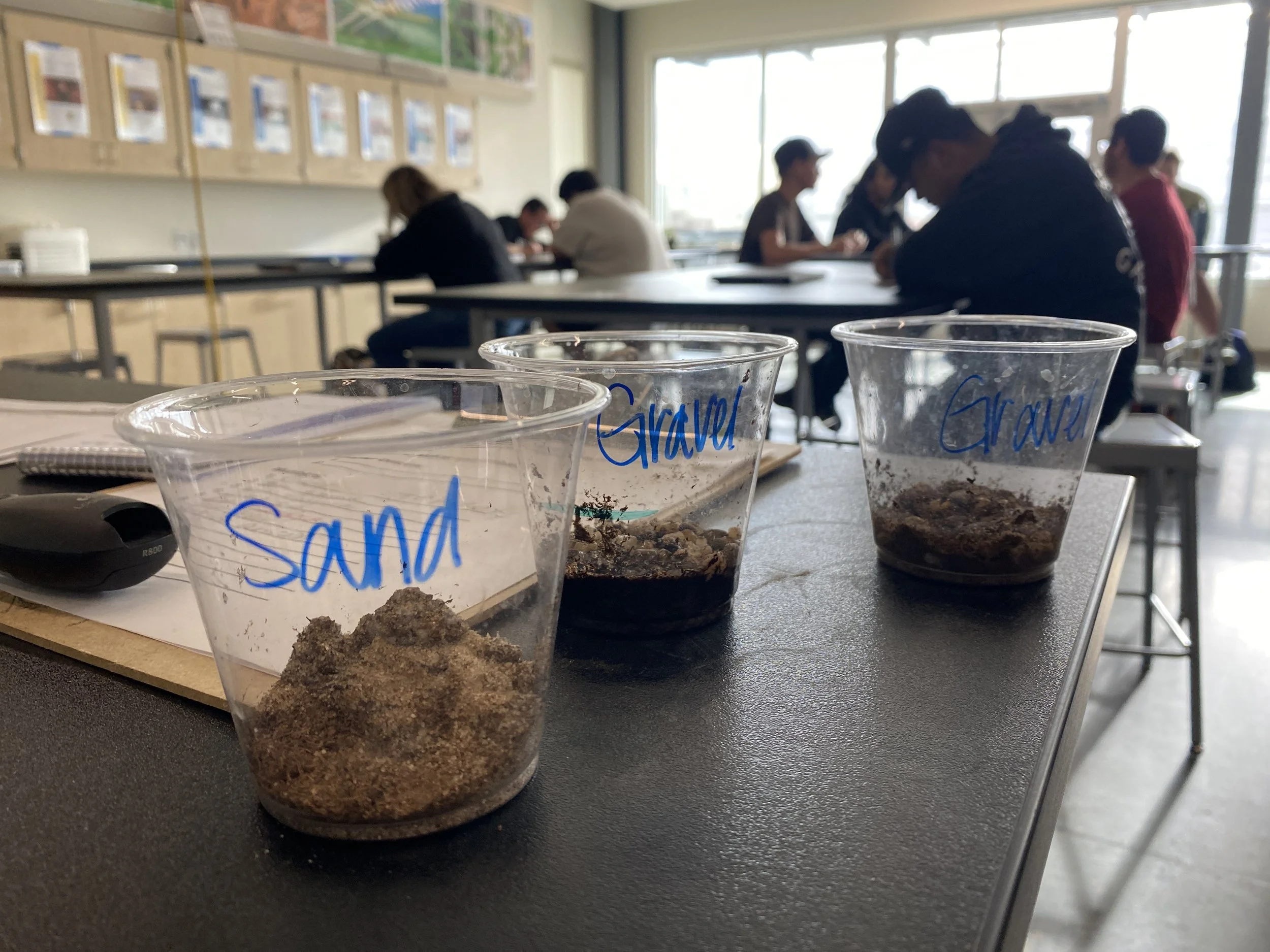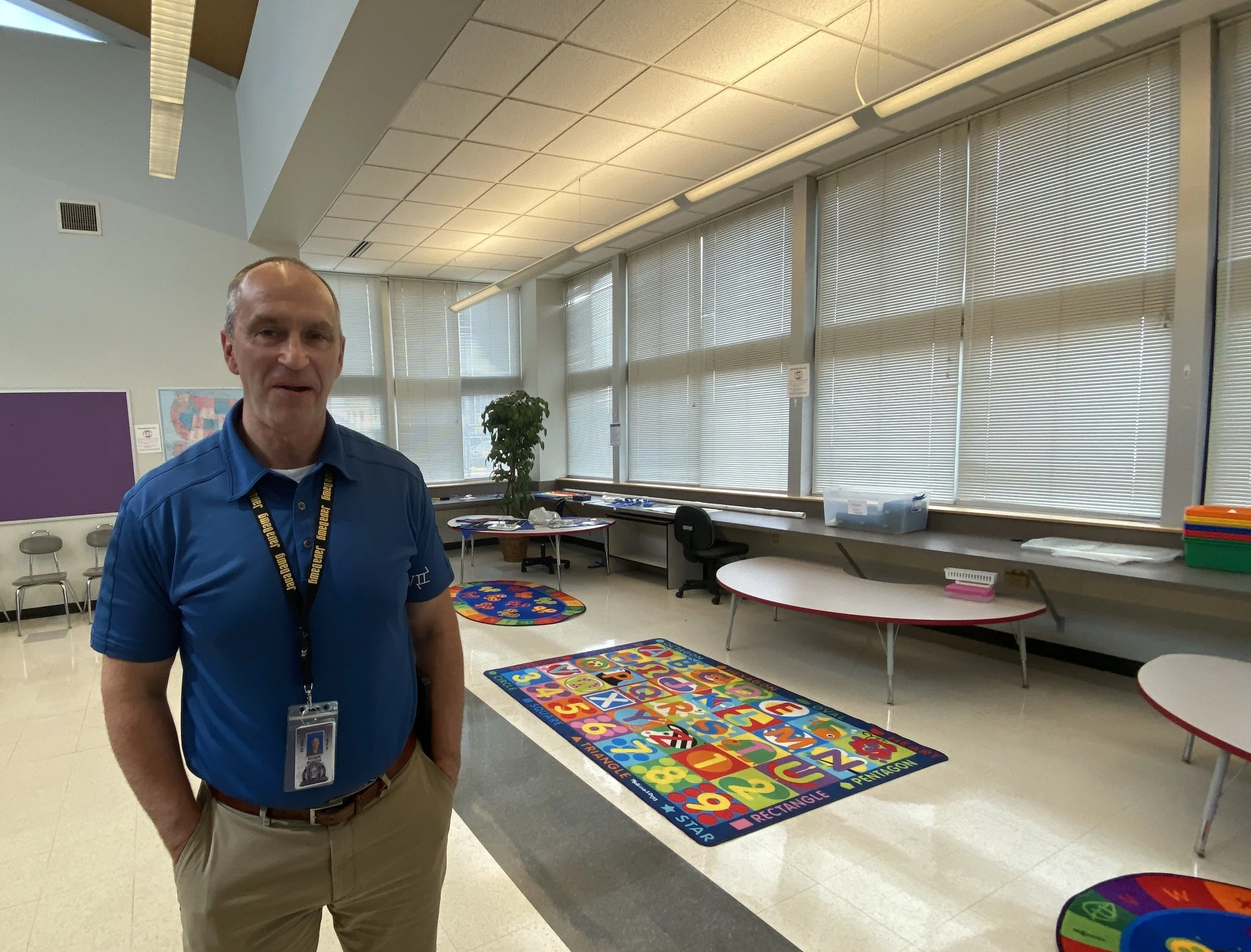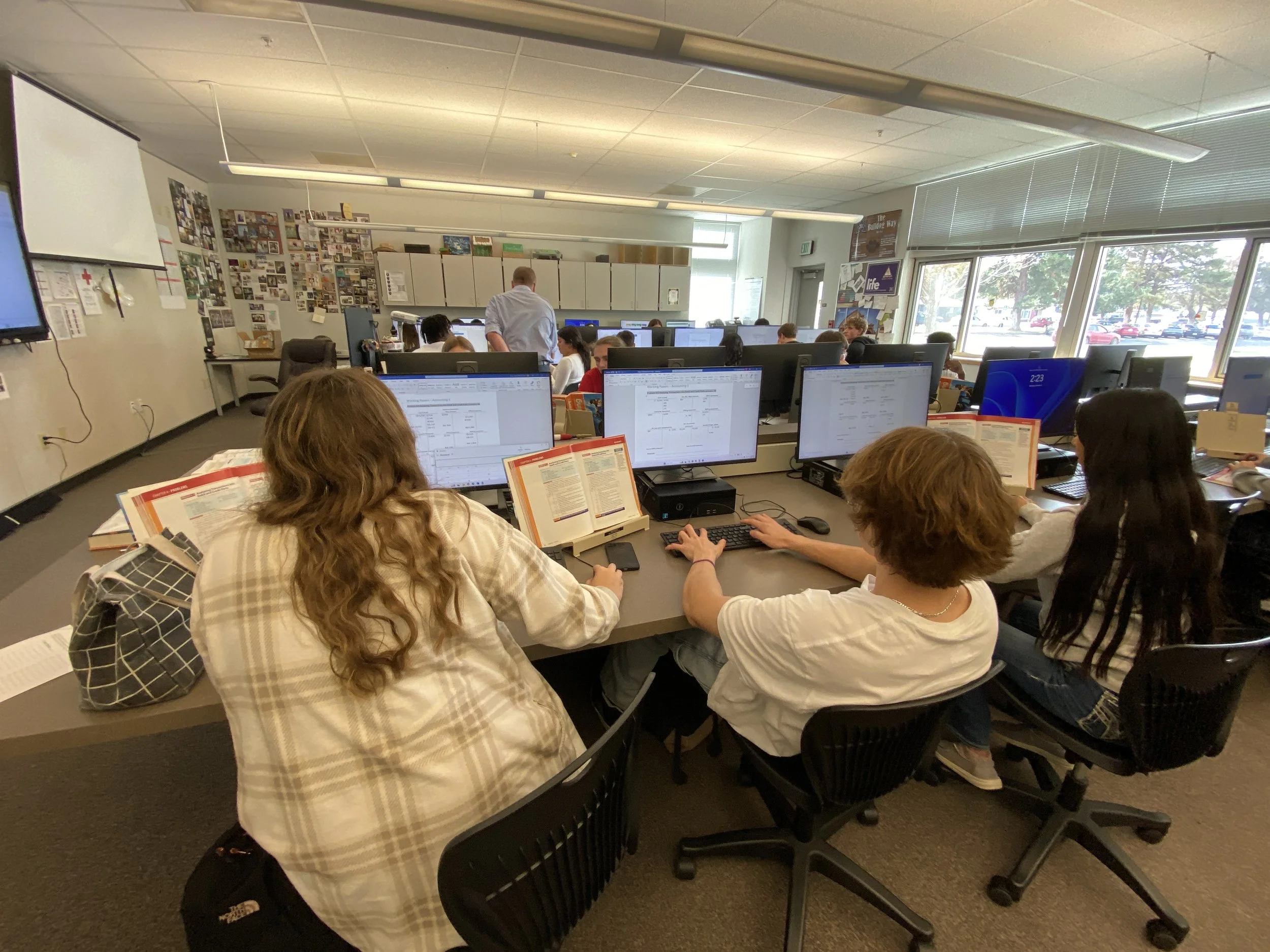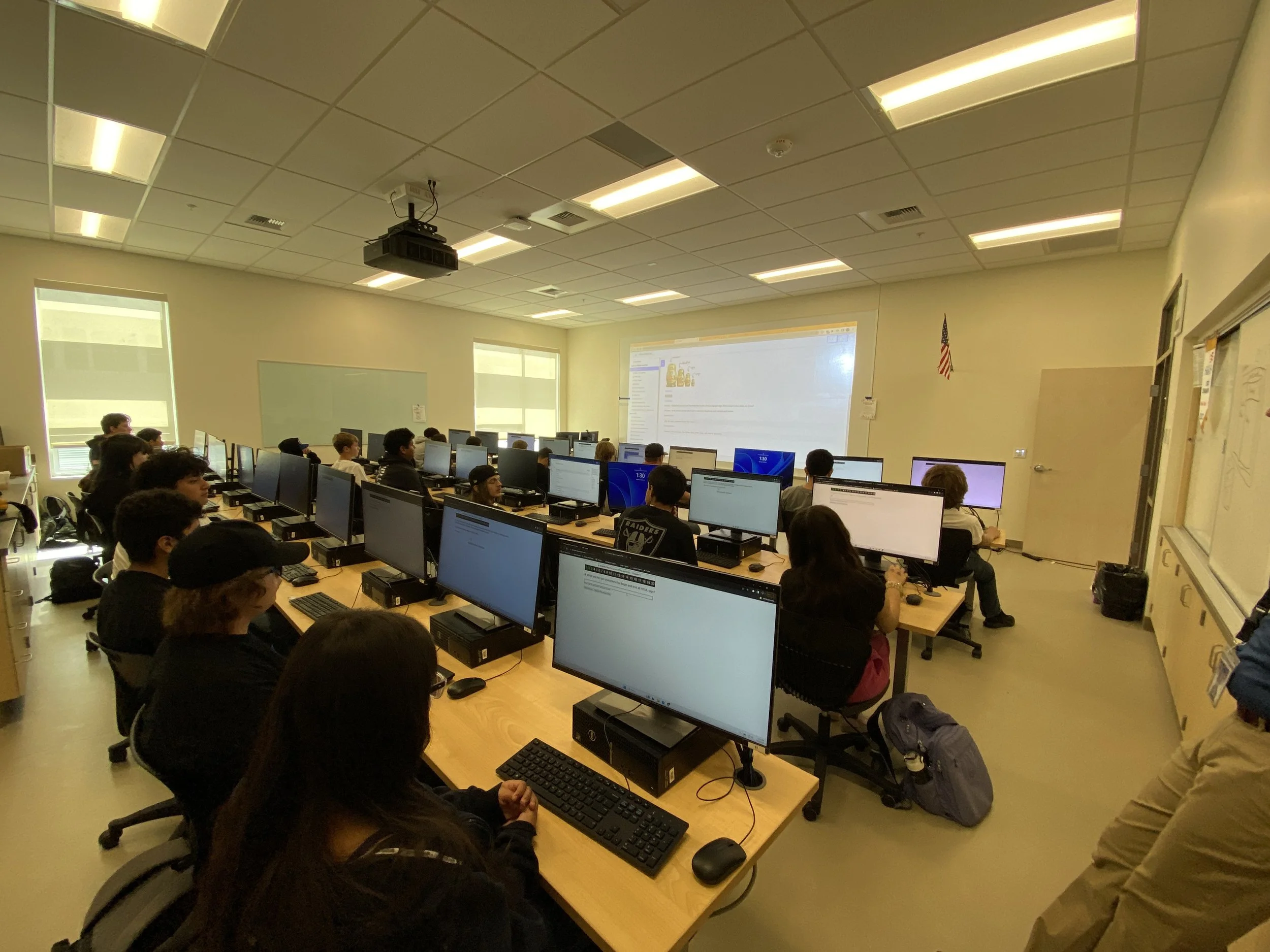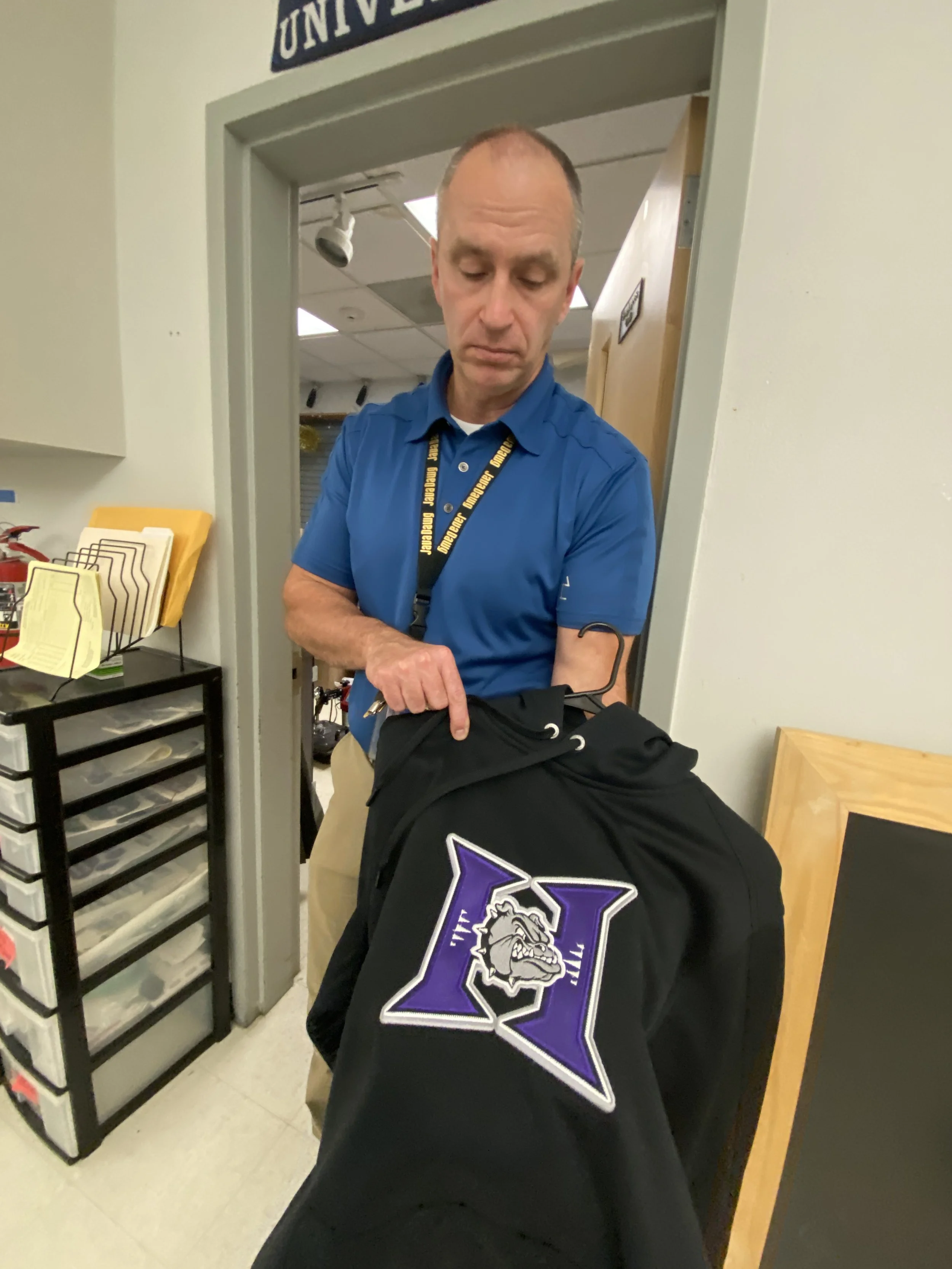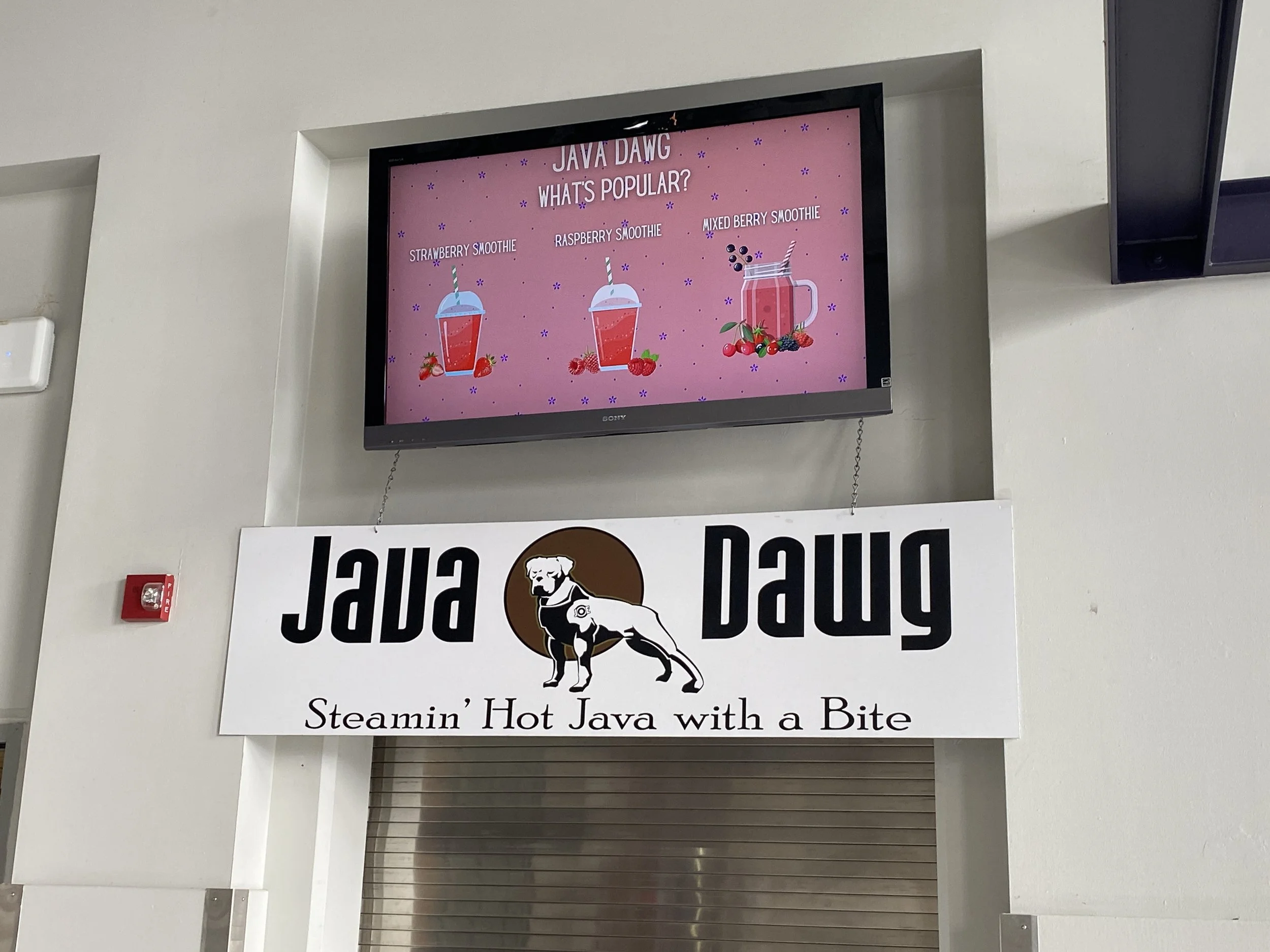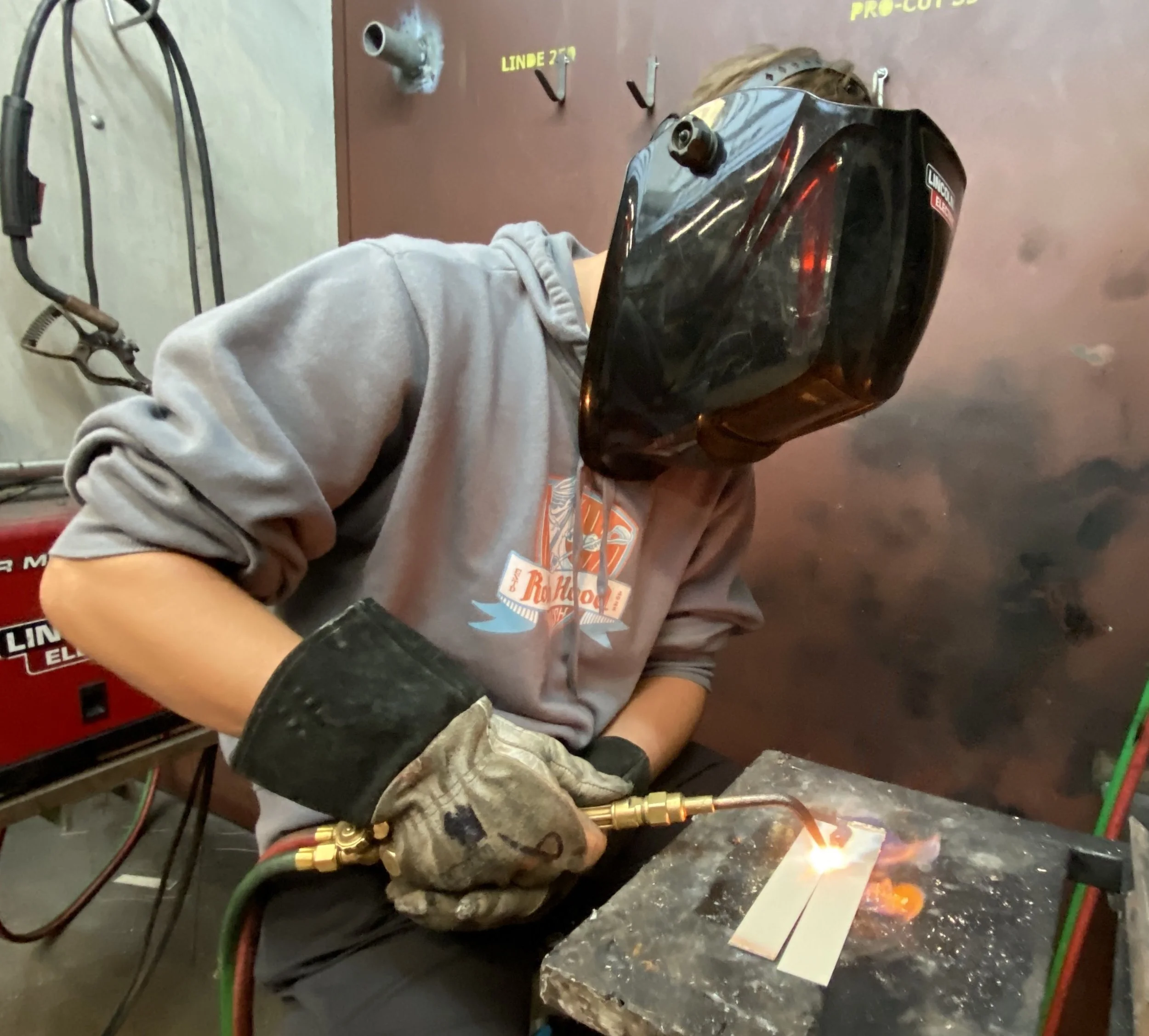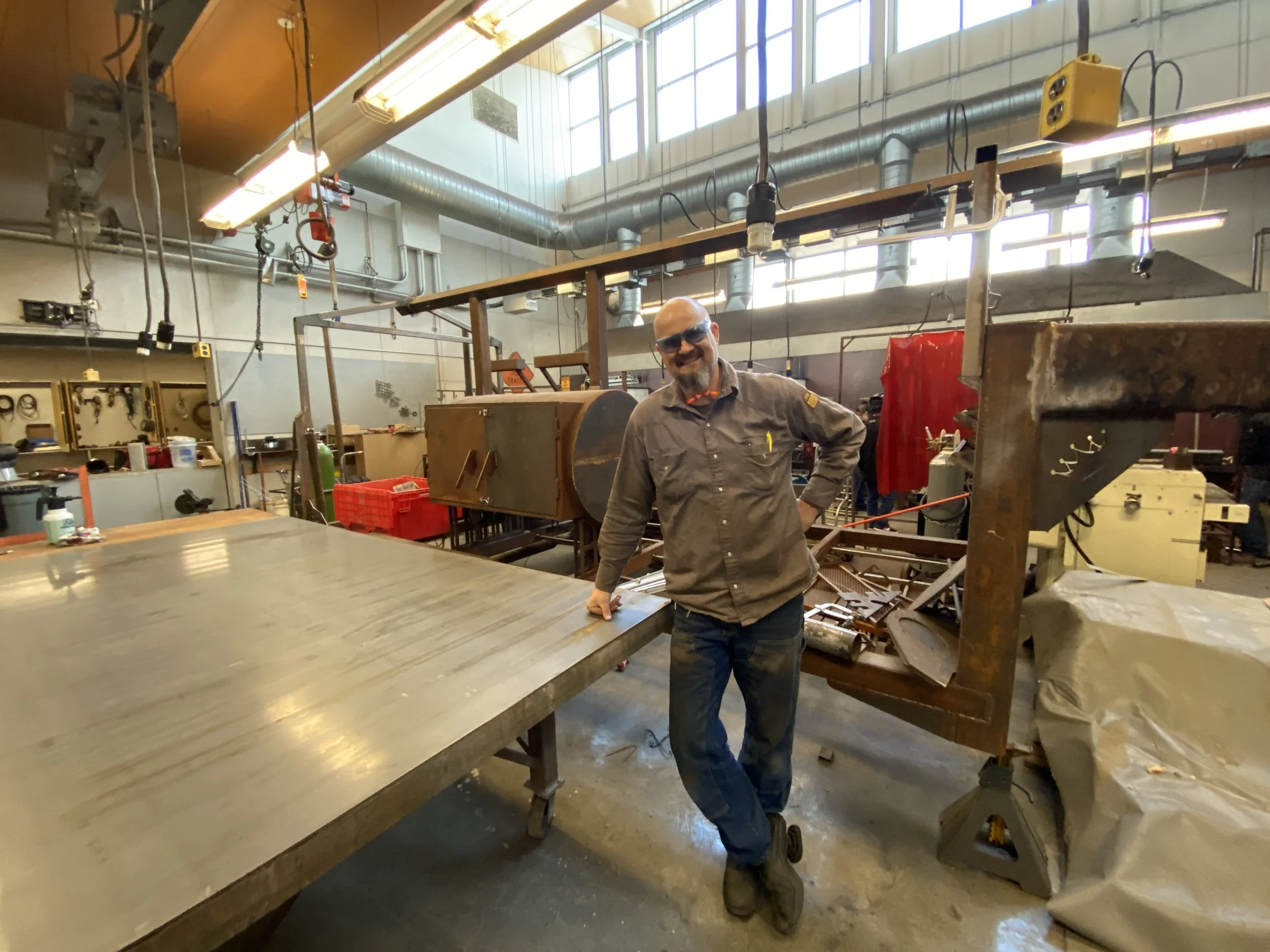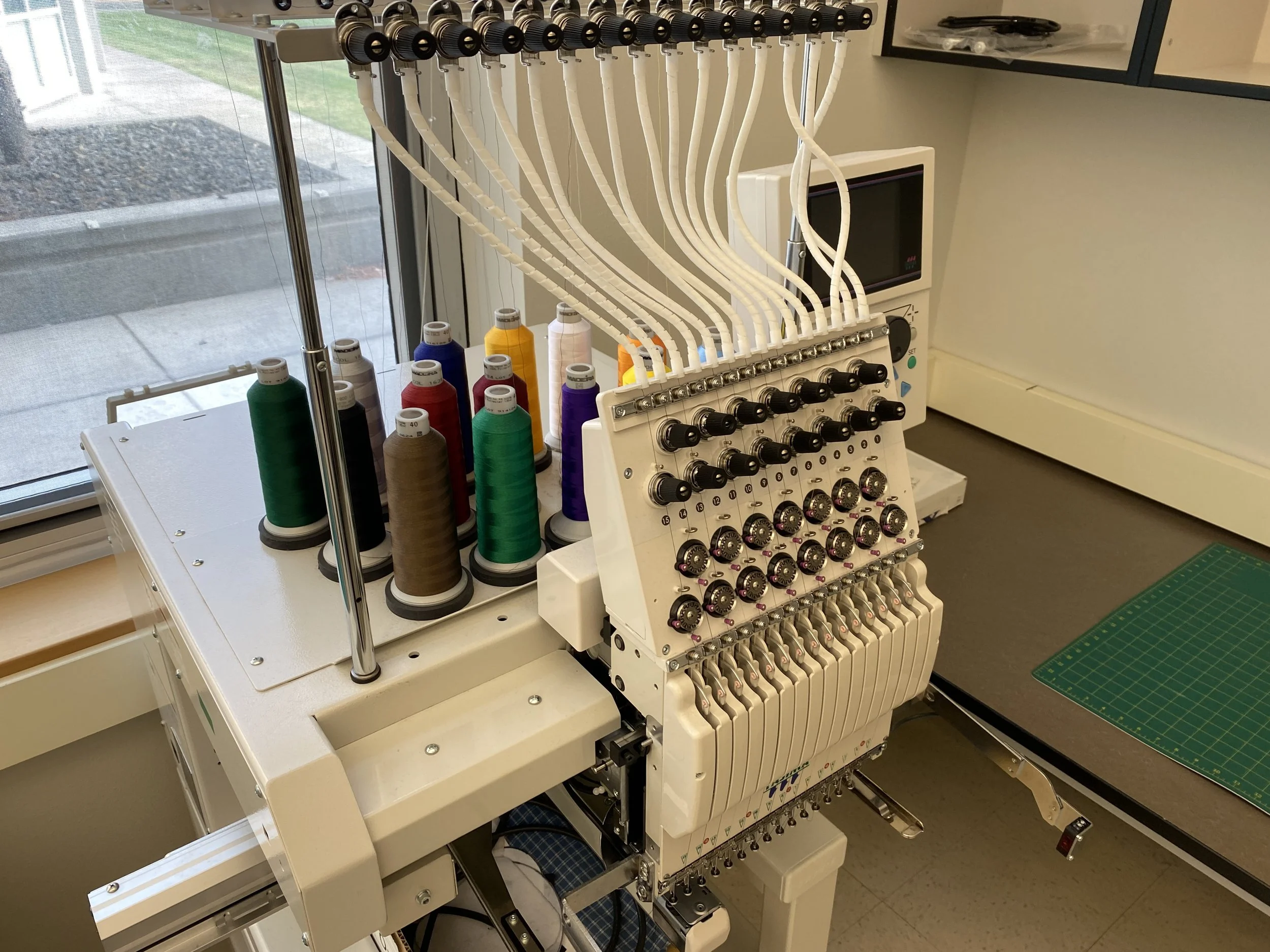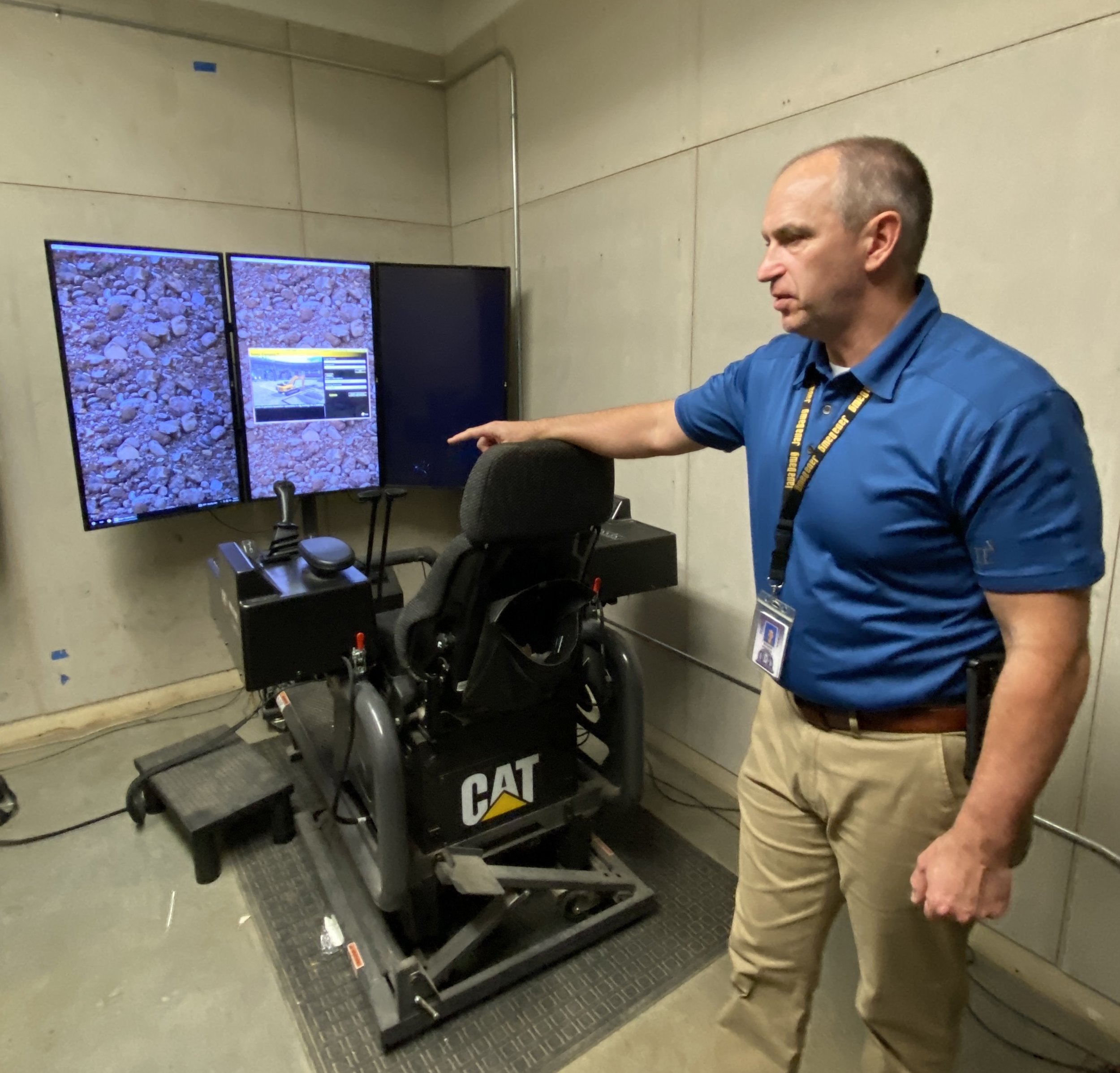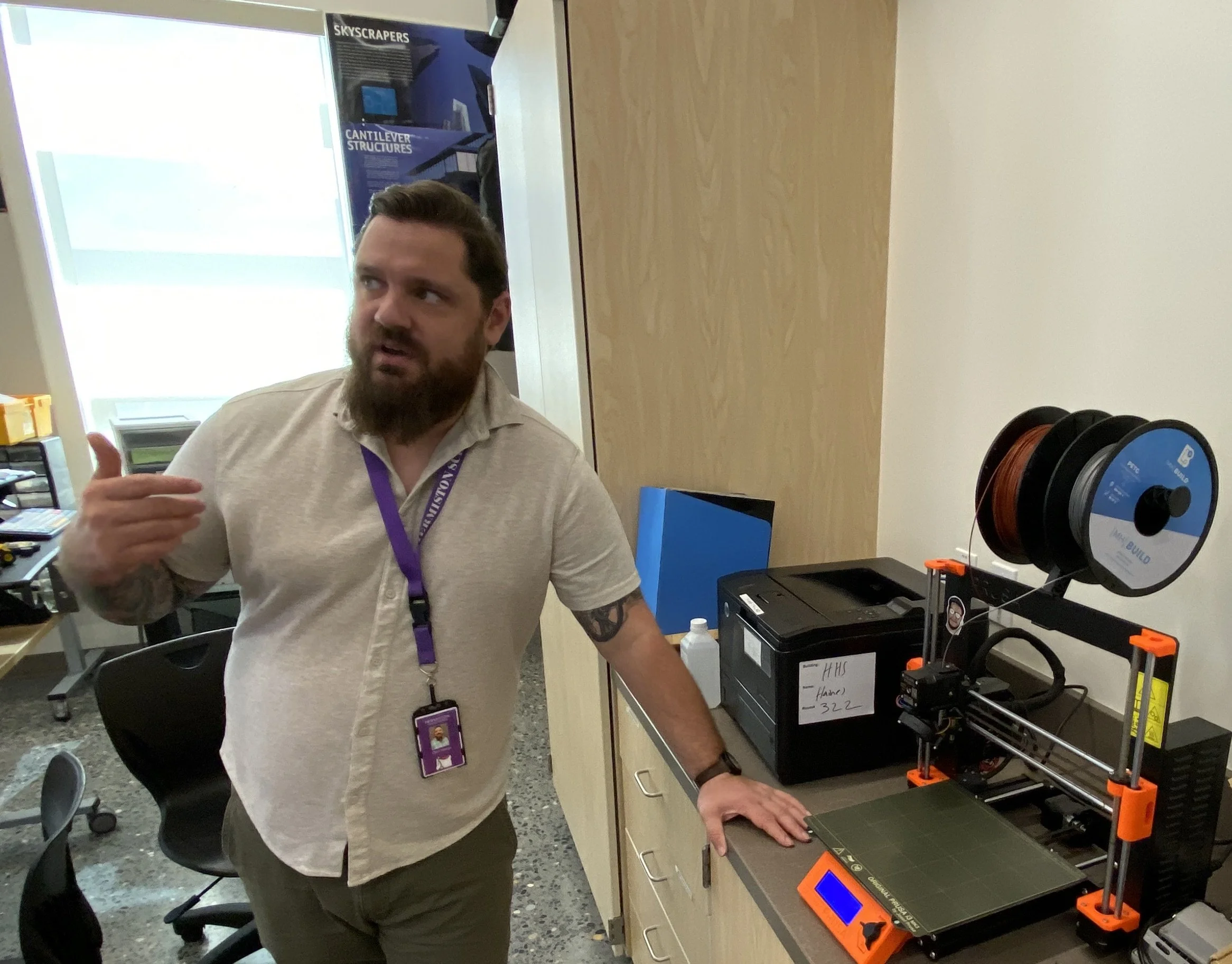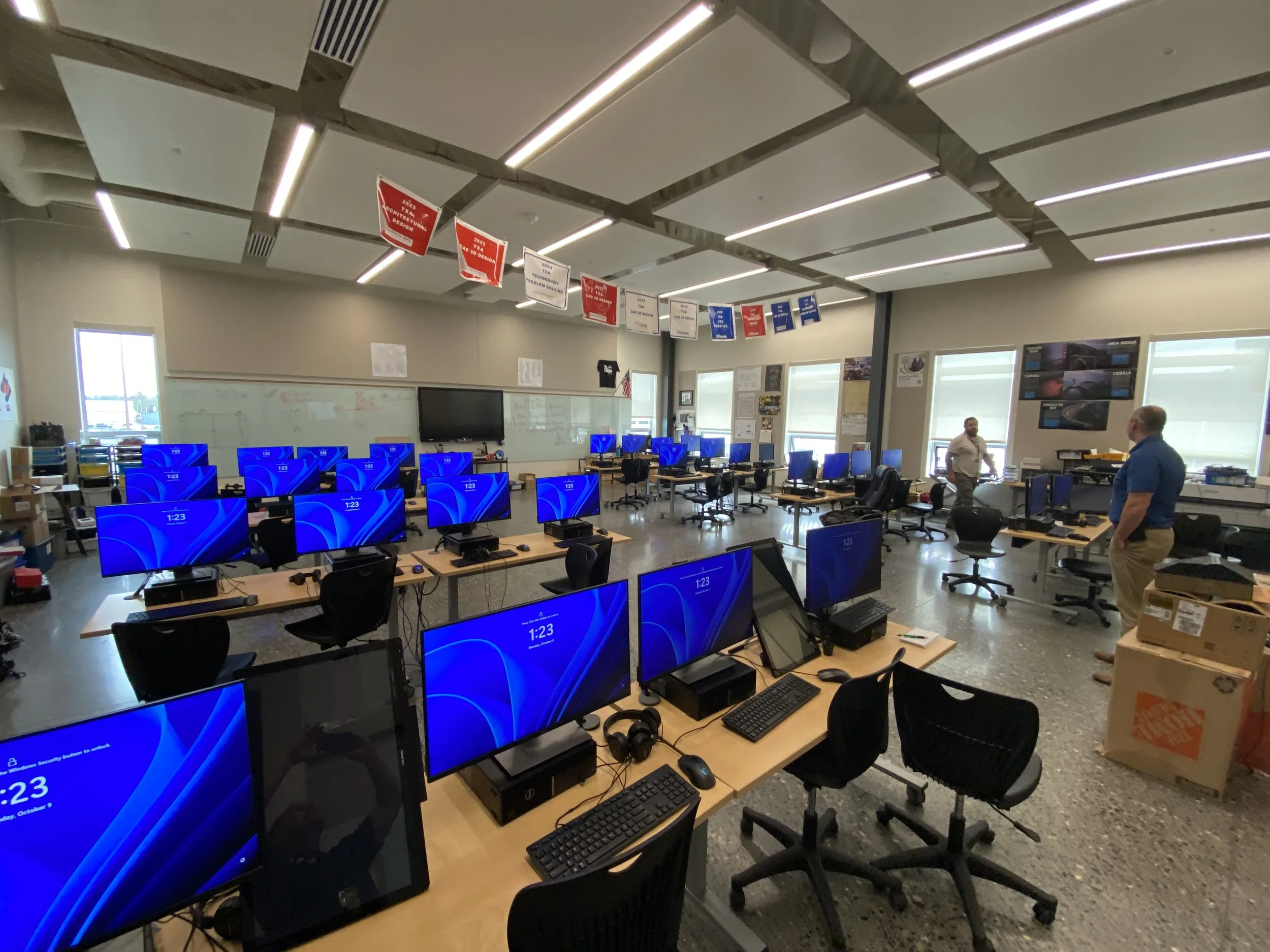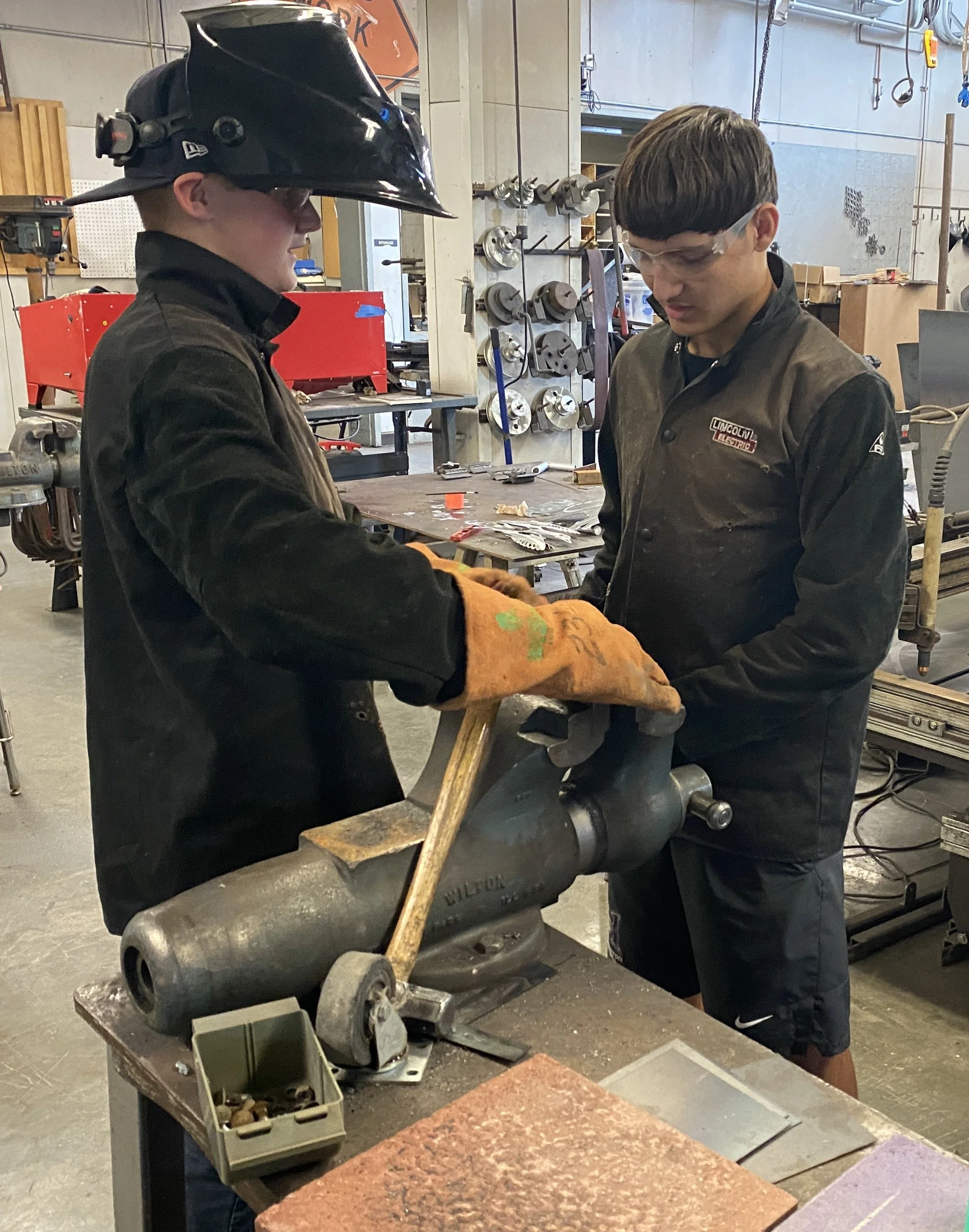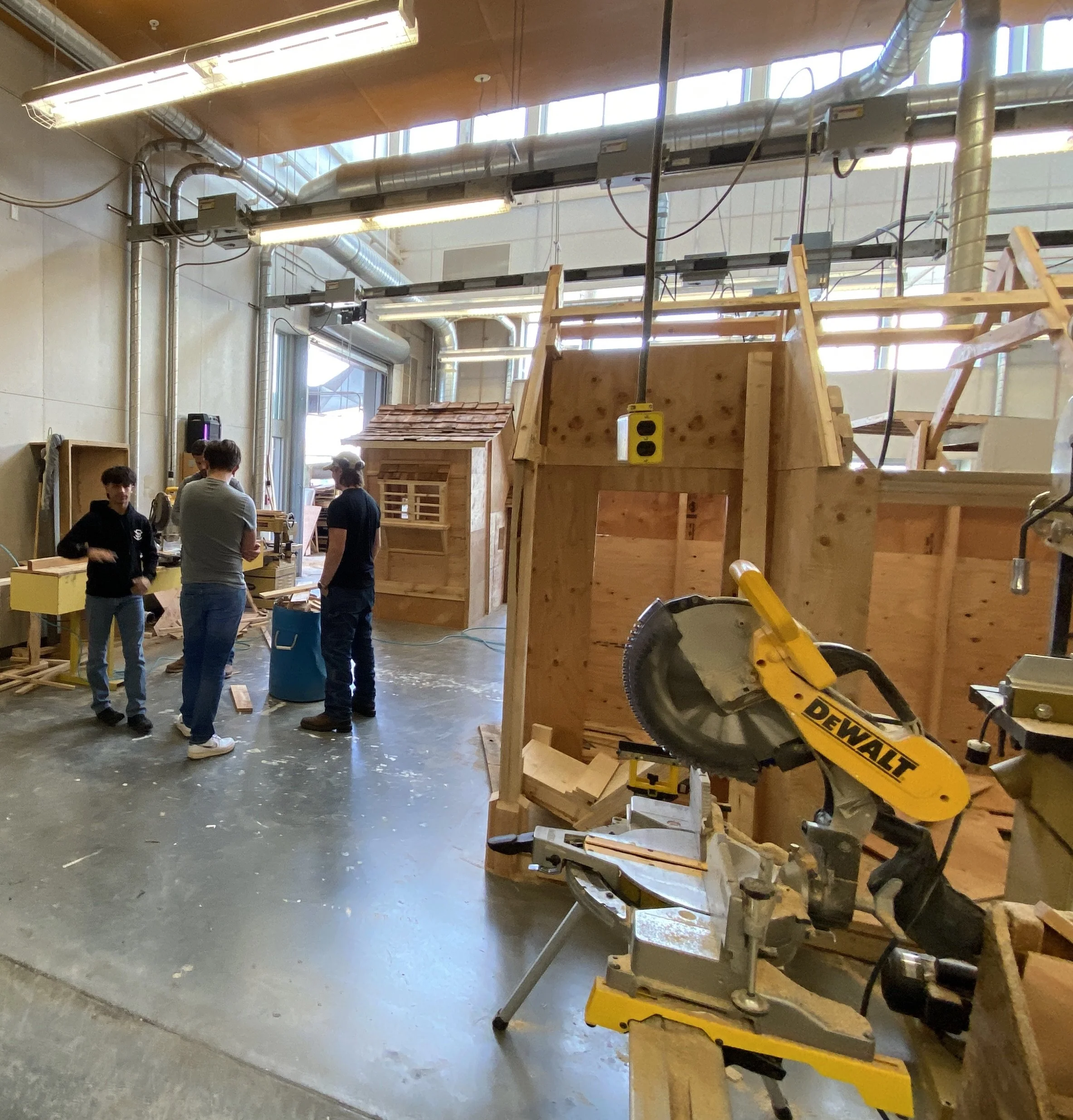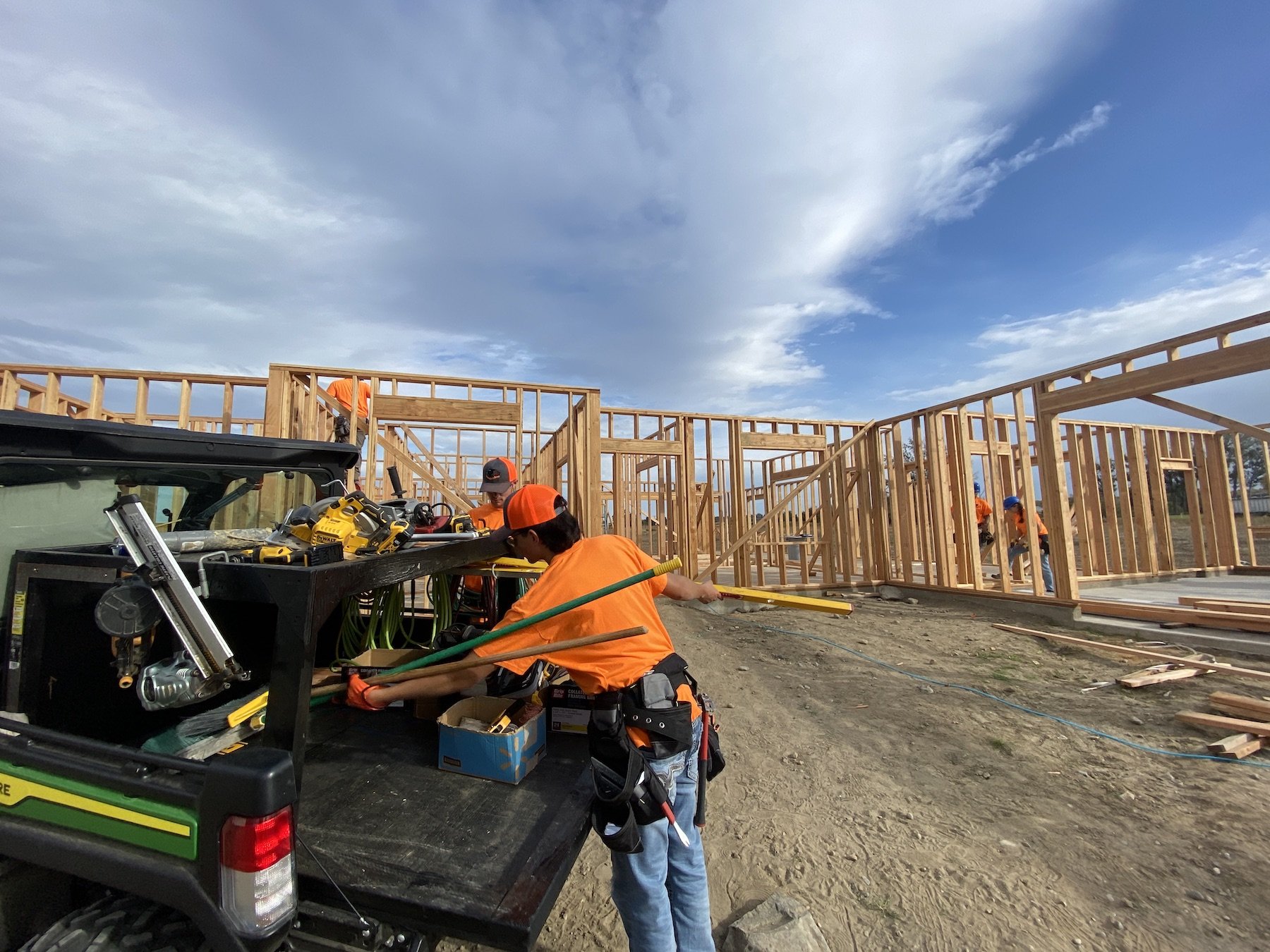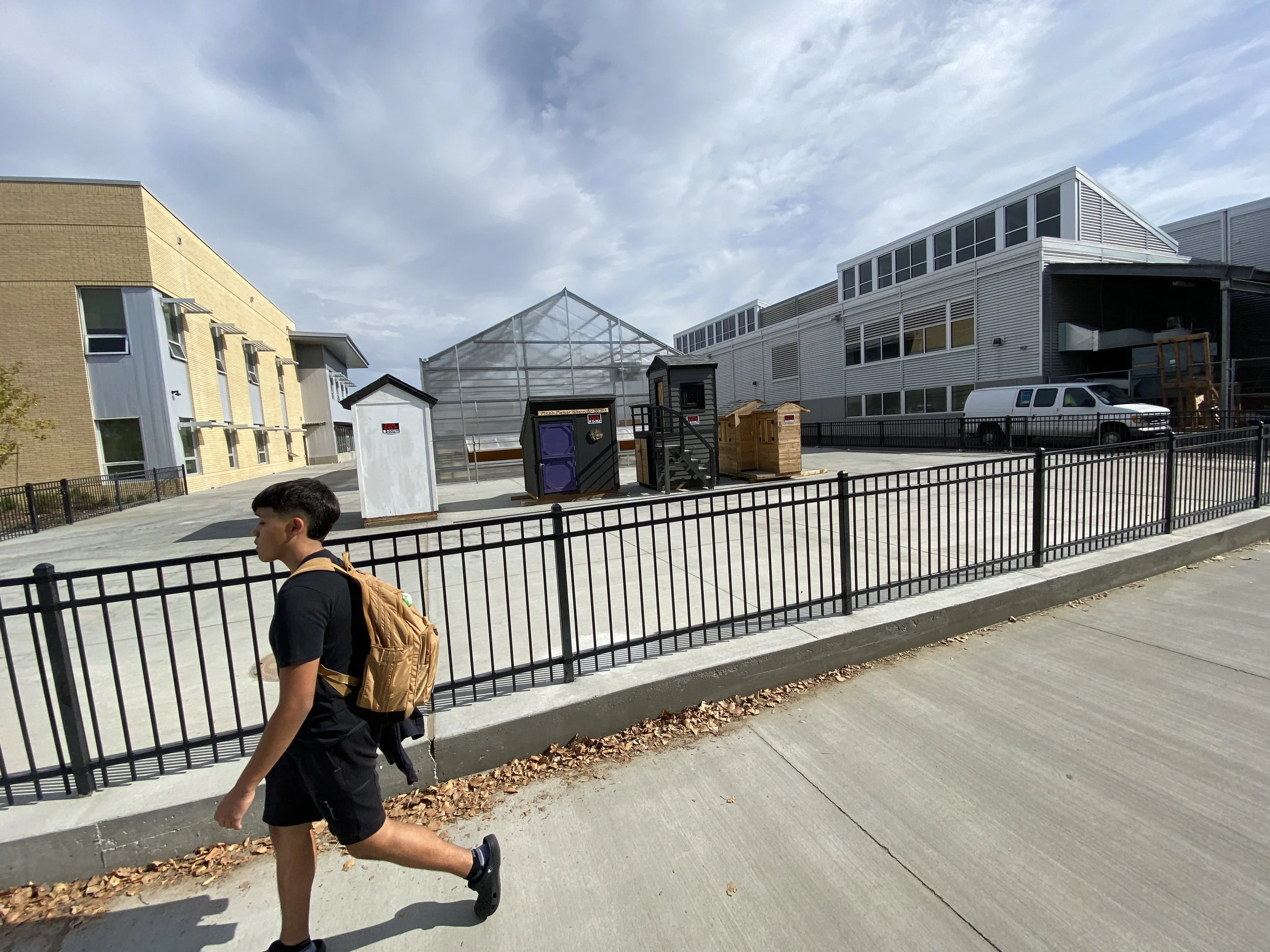Hermiston provides insight into what Career Tech could be in TD with new school
Hermiston High School Senior John Putnam Jr. and Columbia Basin Student Homes instructor Curt Berger stand in front of an entire street of homes built by students during the past 10 years. It is part of the High School’s Career and Technical Education program. Their last build sold for $514,000.
By Tom Peterson
Hermiston, Ore., Oct. 9, 2023 - Roger Berger moves fast.
The coordinator of Career and Technical Education at Hermiston High School has to.
There is so much to see - engineering, computer science, plant and animal science, metal fabrication, teaching, even building modern homes - the last one sold for $514,000 on the open market.
These are the classes where students get their hands dirty, doing actual jobs that exist outside the classroom and in the real world: from accounting to pounding nails; from welding to teaching elementary students; from dissecting farm animals to growing thousands of vegetable and plant starts in a vast greenhouse; from creating and printing banners to cappuccino art; from learning to draw blood to experimenting with 3D printers.
Students take a test after learning about soils in their Future Farmers of America class. The Greenhouse out the window awaits as they will be dealing with thousands of plants in the upcoming months. The plants will be grown and sold.
Roger Berger shows off the education room where students get involved in practicums, from setting up the room to teaching elementary students who are brought to the school. This career education gives students a chance to try a discipline out to see if they want to follow that career path after high school.
Students don’t ask why they need to learn these topics.
The evidence - real world jobs - and the money you can earn from them - is self-explanatory, Berger said, noting he was a hands-on learner himself in his younger years.
So, CCCNews attempted to keep up with Berger on Monday to get an inside look at what career and technical education or CT looks like at a modern school as voters in the North Wasco County School District must decide on whether to support a $140-million bond to build a new high school on Nov. 7th.
Granted, Hermiston High School has a student population of 1,700 - 750 more than here in The Dalles and Hermiston School District is larger, but the CT program gives insight into what can be done, albeit at a smaller scale locally if the high school bond passes.
The new school in The Dalles would be located on the east end of the Wahtonka Campus and would greatly expand the amount of space for CT education, which is currently limited to six offerings - including culinary, auto shop, audio and visual, health science, information technology, and manufacturing. And while local teachers are doing their best they are limited by the older school both in computing and classroom space. TDHS Principal Kurt Evans made it clear that the current school built in 1941 is simply out of space for this modern and engaging approach to CT education.
Hermiston has a track record of passing school bonds dating back to 2008 when voters paid for a new high school. In 2019 a bond passed, in part, for a $13 million addition to add on a 26,000-square-foot annex for primarily CT education.
The new two-story annex at Hermiston High School was completed this year. It offers space for multiple Career and Technical Education programs, including agriculture, engineering, computer science, and more.
What immediately becomes evident while touring the classrooms at Hermiston High is the vast number of computers for students to use while following along with the instructors who utilize massive screens at the front of the room. Classrooms in accounting, engineering, hospitality, and agriculture are equipped with computers. Larger monitors in the accounting room can open multiple applications at a time, quickly. There is no waiting around. Students get to work right away.
Students working in accounting at Hermiston High School each have a computer and a larger screen. The program currently has 250 students enrolled.
Students work on code during a computer science class at Hermiston High School. Again, students have modern computers. A large visual display at the front of the room makes it easier for teachers to demonstrate and teach.
The Arts and Information program gets down to brass tacks with these embroidered hoodies.
This access to computers provides a lot of crossover into real-world jobs. For example Quickbooks and Excel, dovetail right into the business management program - where students learn how to run businesses right in the school - they operate concessions and marketing and make products such as hoodies embroidered with the school mascot - a tough-looking bulldog, and the Java Dawg coffee shop.
In the mornings, teachers and students can place orders for breakfast items and beverages at Java Dawg and students make and deliver them.
Berger said students in the business management program eventually get to the point of operating one of 5 businesses in their senior year - taking on titles of Human Resources, Controller, Sales, and promotion.
“These are actual jobs,” Berger said. “An HR person has to schedule when people come in and what they will be paid.”
A student wrote the code for this Java Dawg coffee shop display. The banner was designed and created by students in the Arts, Information, and Communications program.
“Why pretend to do stuff when there is so much that really needs to be done,” Berger said, noting a student in computer science has written the code for the new menu board for the Java Dawg coffee shop.
The businesses grossed around $140,000 last year, Berger said. They rely on school clubs to fill the various jobs, thus supporting extracurricular activity while teaching customer service skills. So, yeah there is a payroll to meet.
And if something goes wrong - students have to fix it. This is real-world stuff for the high school with a population of 1,700 students.
Berger shows off the concessions and Java Dawg kitchen, which was repurposed from another site and added to with state of the art ovens, an espresso machine and even a latte art printer.
Parker Boren working on a weld.
We met Parker Boren, a freshman working on welding in the metal fabrication shop. He was learning a basic weld but could move on to trailer construction or other various projects before graduating.
Instead of just welding in a booth, students eventually learn to fabricate and make needed items.
Berger said they have encouraged more girls to get involved in the program by removing basic barriers such as having the right size gloves, welding helmets, jackets, and other safety equipment.
Metal Shop Instructor Kelly Robison next to a BBQ trailer students constructed. “We like our BBQ around here,” he said.
Metal Shop Instructor Kelly Robison said they are working in concert with the construction program where his class will build a trailer and the construction class will construct a mini-home to fit on it which could be sold for around $35,000 to someone needing a home. Hermiston, like much of Oregon, is also facing a lack in housing stock.
Embroidery machine for student use - just one of the many tools they have access to as they journey down a career or technical path.
During the tour, it also became abundantly clear that students have access to the tools they need to be productive. For example, the metal class has a computer-aided design (CAD) plasma cutter. Construction has a similar wood router that can cut out designs as large as 4’ x 8’.
Berger with the heavy equipment simulator students use to become fluent in their operation.
Marketing which produces t-shirts, hats and hoodies has two embroidery machines.
There are heavy equipment simulators where students can learn to operate excavators and other heavy equipment. There are virtual welders as well where students can safely learn to operate the equipment.
Engineering Teacher Colin Haines shows off one of the three 3D printers in his classroom. The room also features a computer-aided-design laser for students to work with.
The Engineering room is robust with computers and is also 2,500 square feet allowing plenty of room for group projects.
Students use a vice to bend metal for a project in Metals class.
In the Engineering room, teacher Colin Haines has several 3D printers and a Laser to make engravings. His room is 2,500 square feet which is more than twice the size of a normal classroom allowing engineering students the space they need to do group projects.
Similarly, the construction and metals shops have two-story rooms for erecting and creating structures such as small sheds or building trailers - this is the space necessary to do real-world projects, Berger points out.
Berger with a practice arm for drawing blood in Health Sciences.
In Health Science Occupations, Berger pulls a rubber arm from a hall closet. It is affixed with tubes. They are used for practice in drawing blood, Berger said, noting the tubes or veins are filled with colored liquid.
Students get certified to be phlebotomists through the class, where parents and teachers volunteer a real arm and vein so that students can formally demonstrate the skill. Students also delve into the different skills of EMTs, nurses and doctors.
Berger said all of CT is designed to get students to actually try part of an occupation to see if they actually like it before investing money and time in a college or trade school after graduation.
After two and half hours of touring, Berger tells me to make one more stop on my way out of town - Fieldstone Crossings.
It’s a subdivision that has been built by students during the past 10 years. And they are framing their 10th house on this day. The program has received national recognition.
Students work on projects in Construction class. These kids could go on to construct houses in a few short years if they enjoy the career.
Curt Berger, a brother to Roger, is in the National Wrestling Hall of Fame - he rolled off five state titles with Hermiston between 2007 and 2011.
And when he retired from teaching he was convinced to start Columbia Basin Student Homes - a partnership with the high school and Hermiston School District and city.
Berger has been working with students to build homes on school district-owned property and they just started on the 10th this year. They got the program rolling with a state revitalization grant of $400,000.
Students use nail guns to cap a wall at the newest home site in Hermiston.
The program is filling two needs - providing valuable trade experience to students while addressing the housing needs in the community.
Berger and teacher Gideon Fritz are running the program, which sticks to a tough timeline to complete one home a year. These are high-end homes. The most recent project is over 2,300 square feet with a three-car garage. It features three bedrooms and three baths with a see-through fireplace.
Students put tools away at the end of the day at the job site.
Their last house sold for $514,000 - money that is rolled right back into the next home.
“This is the real deal,” Curt Berger said. “We give ‘em a hard hat, tool belt, and gloves, and they go to work.”
High School seniors must commit to working on the homes two hours per day during the school year.
Berger said they can go right into the trade after graduation if they show merit.
Curt’s brother, Roger asked me earlier, “Do you think the kids here feel cared about?”
It was a rhetorical question.
“It all matters,” he said. “The classes, the teachers, the equipment, a clean building to come to every day. It all matters.”
Here are the different programs offered at Hermiston High School in its Career and Technical Education program. Seniors graduating with a focus on these subjects are listed below and will receive special recognition at graduation for completing the program. Click to enlarge.
Support Local News
Available to everyone. Funded by readers.

